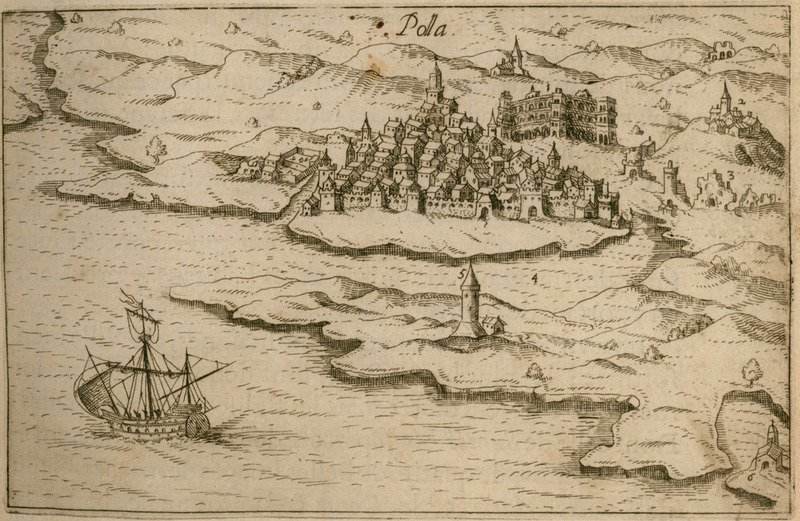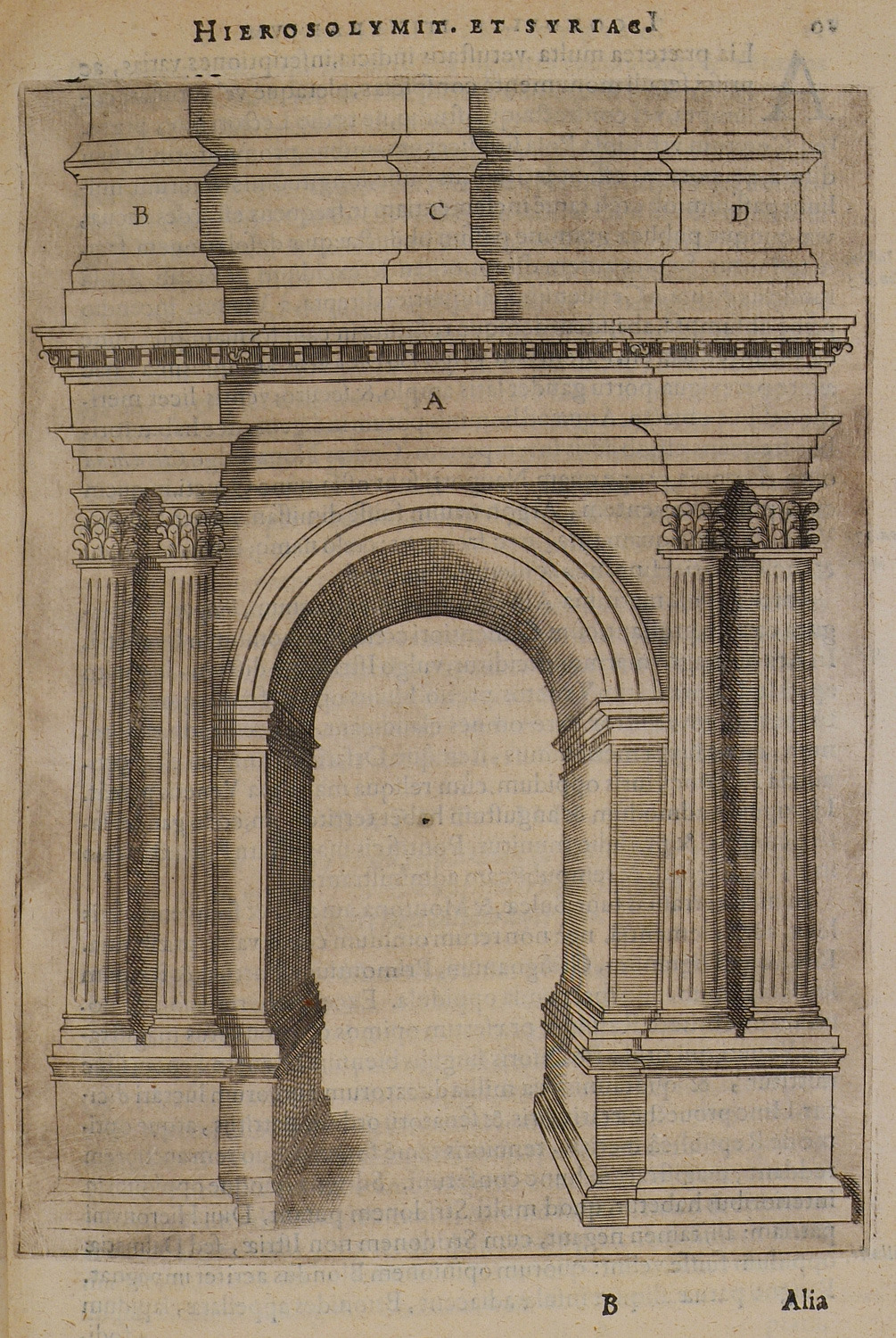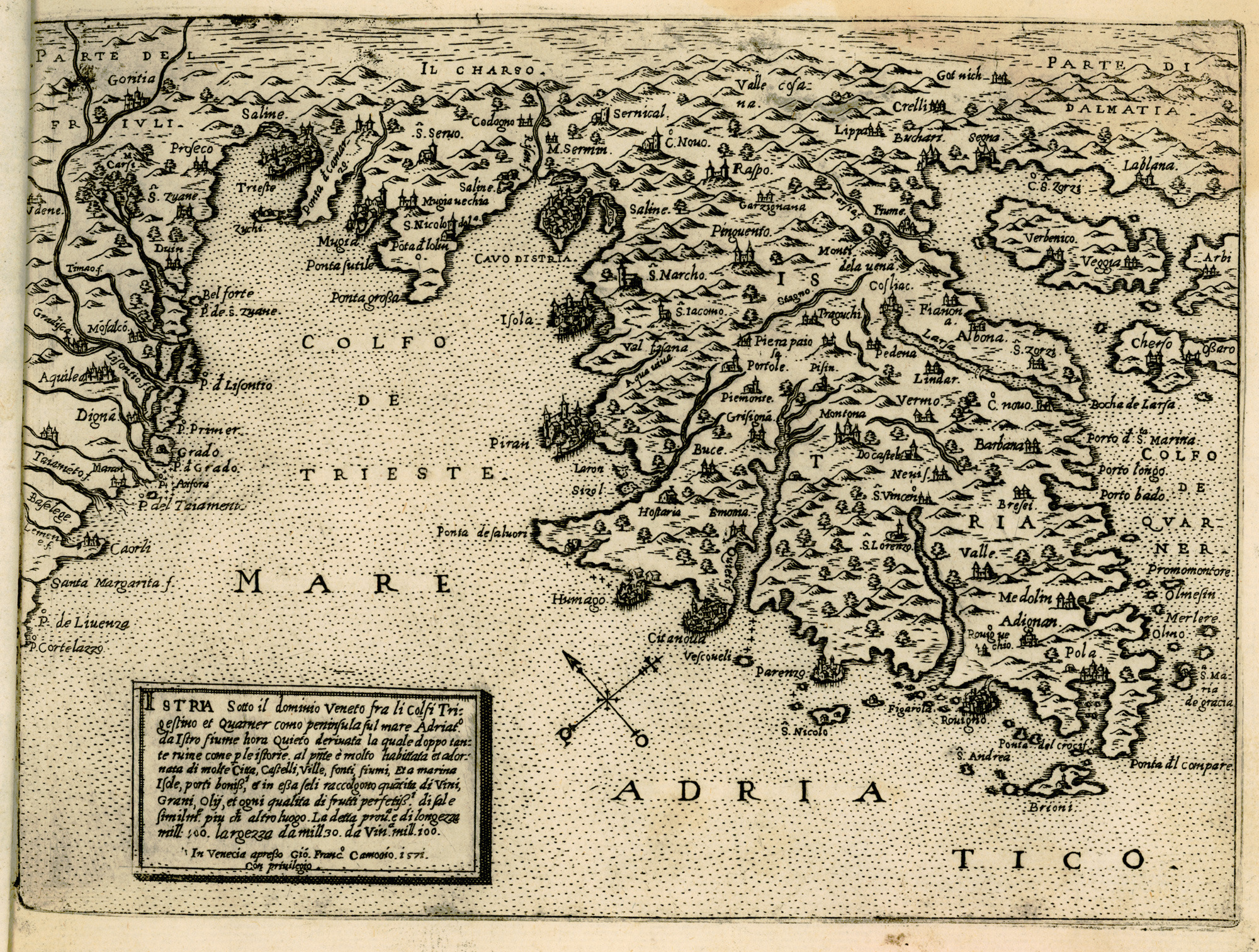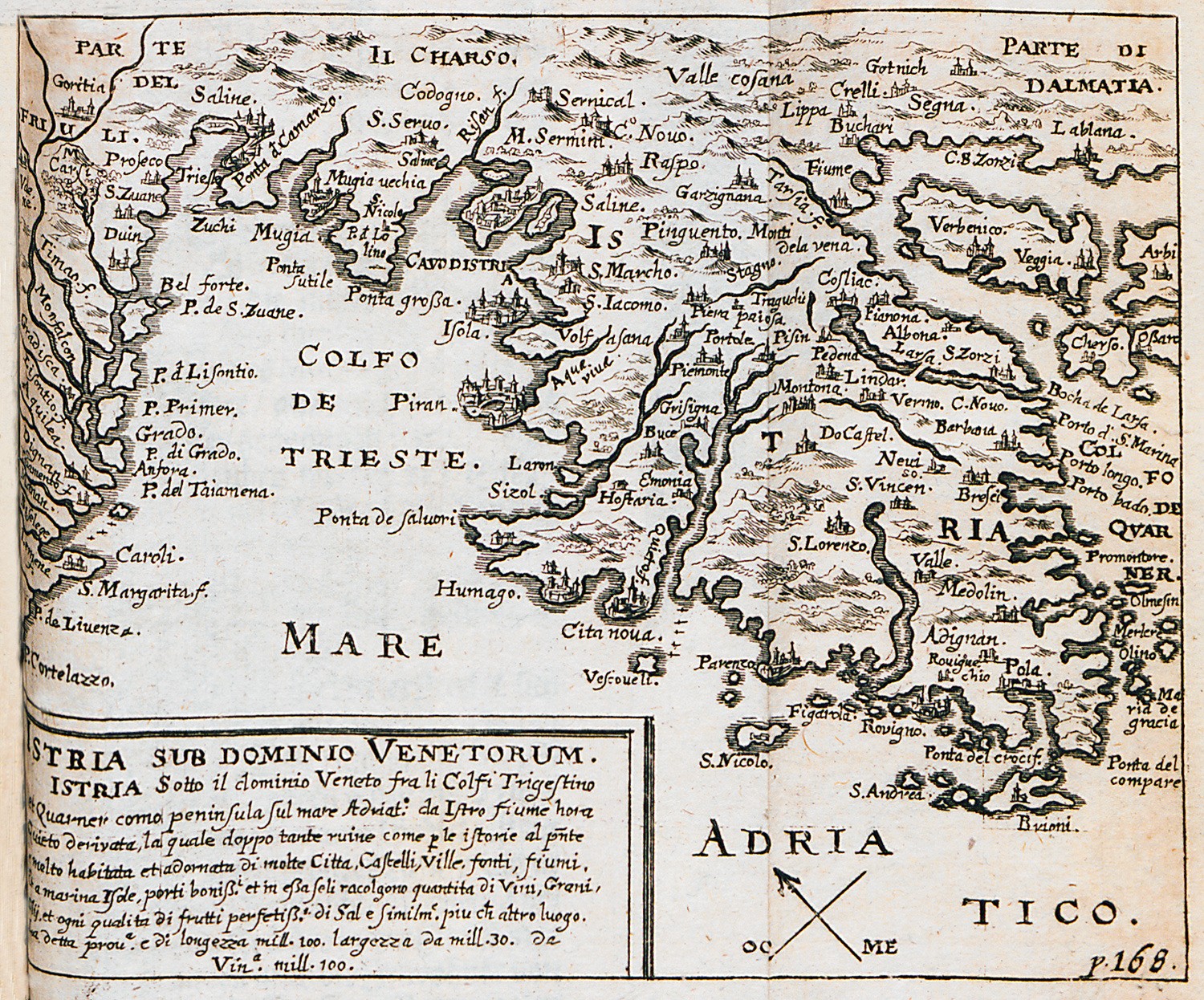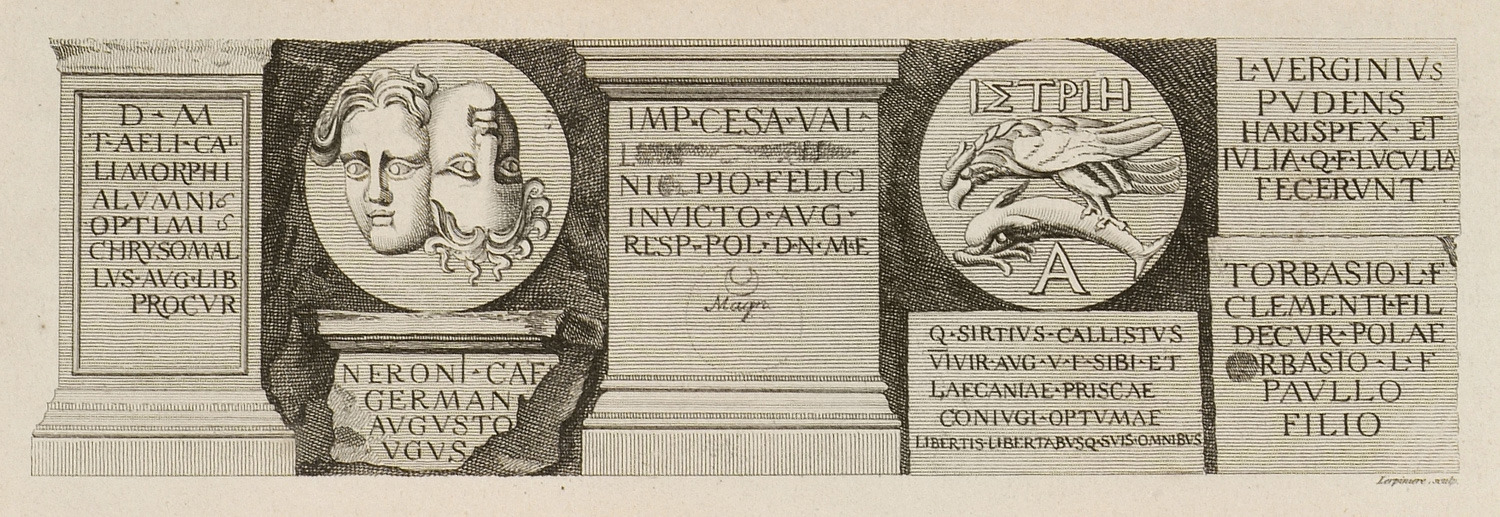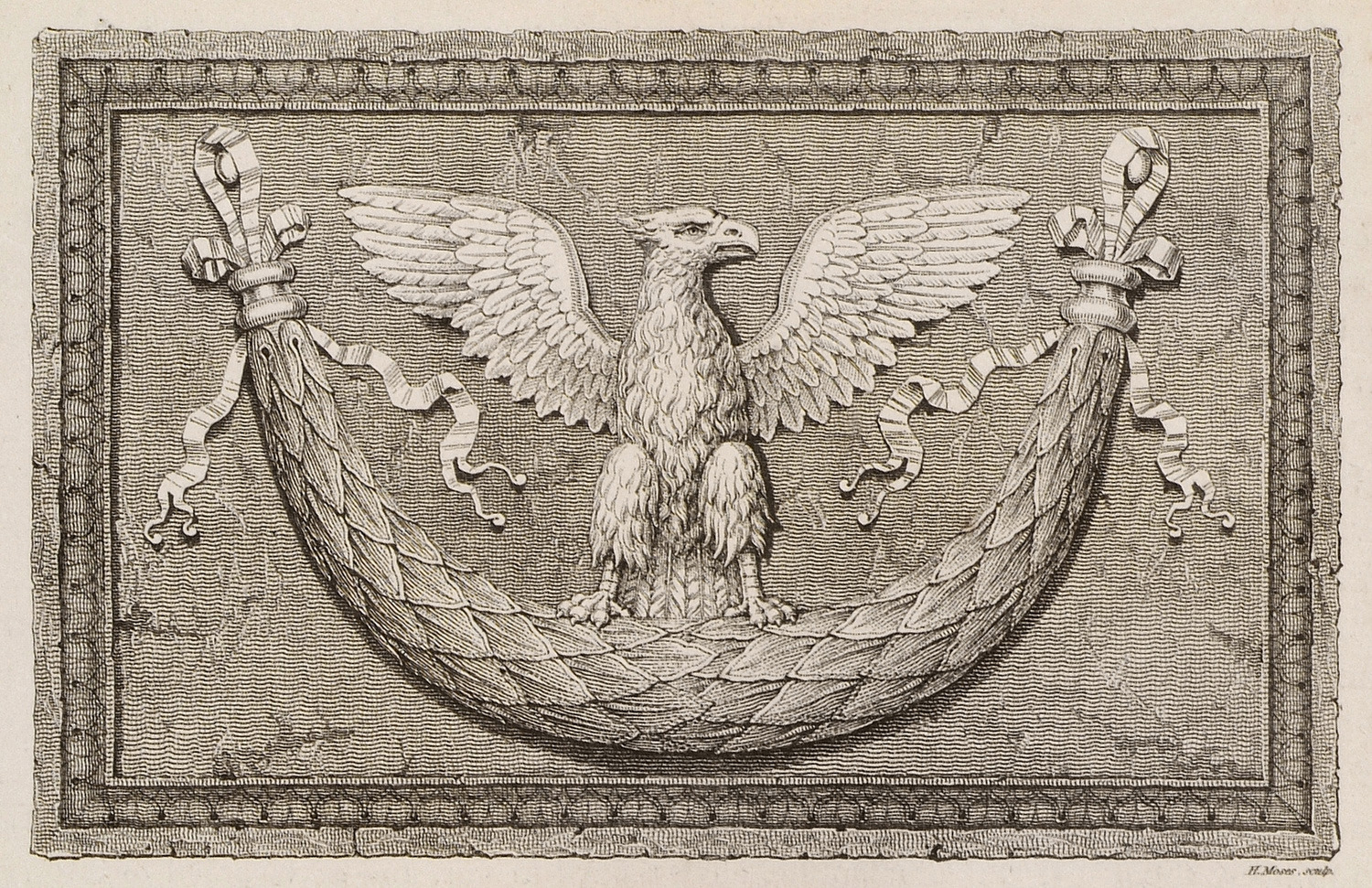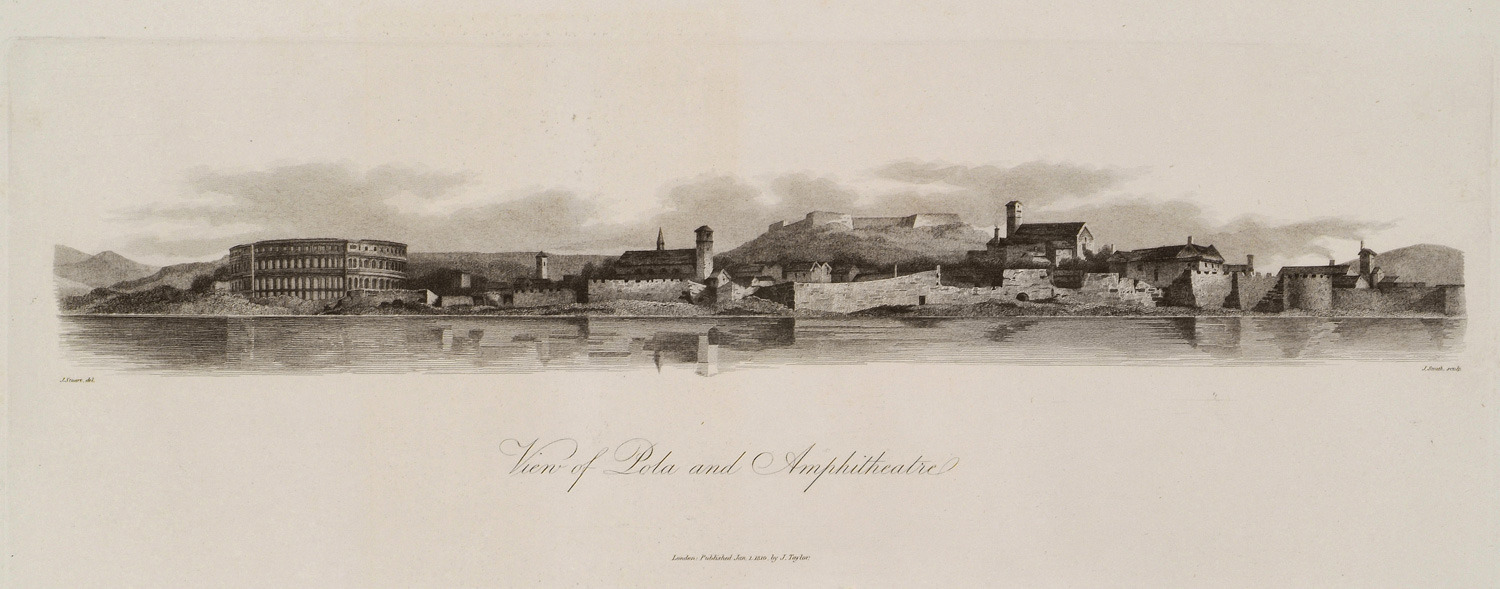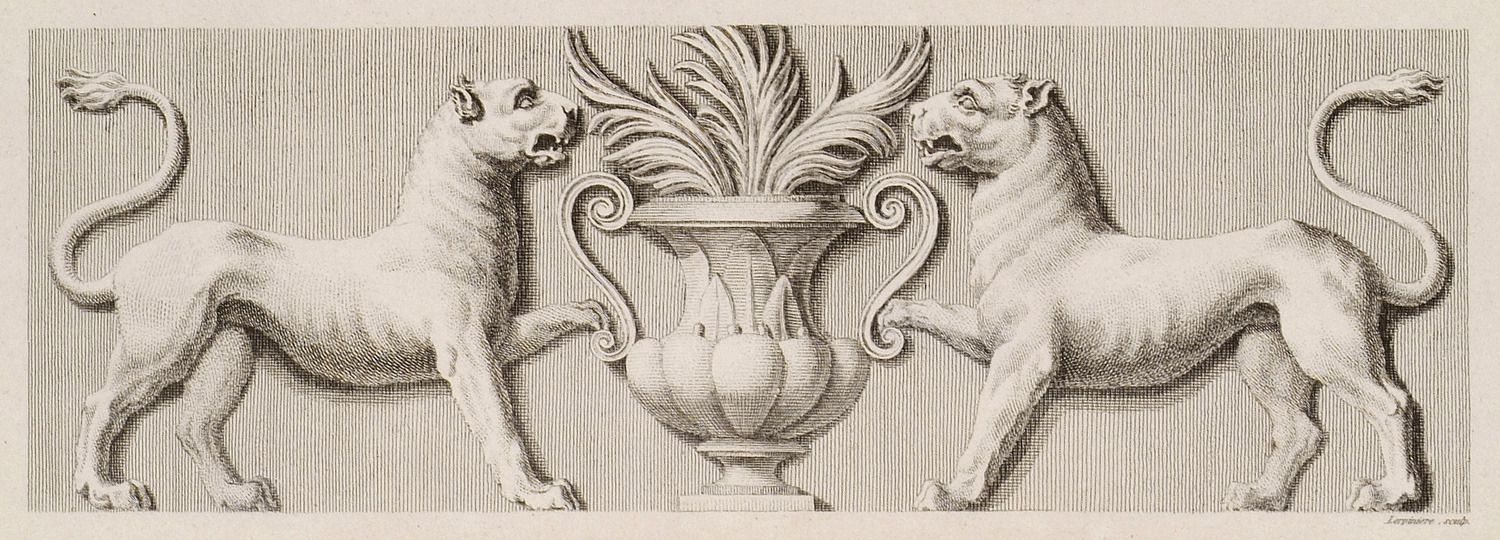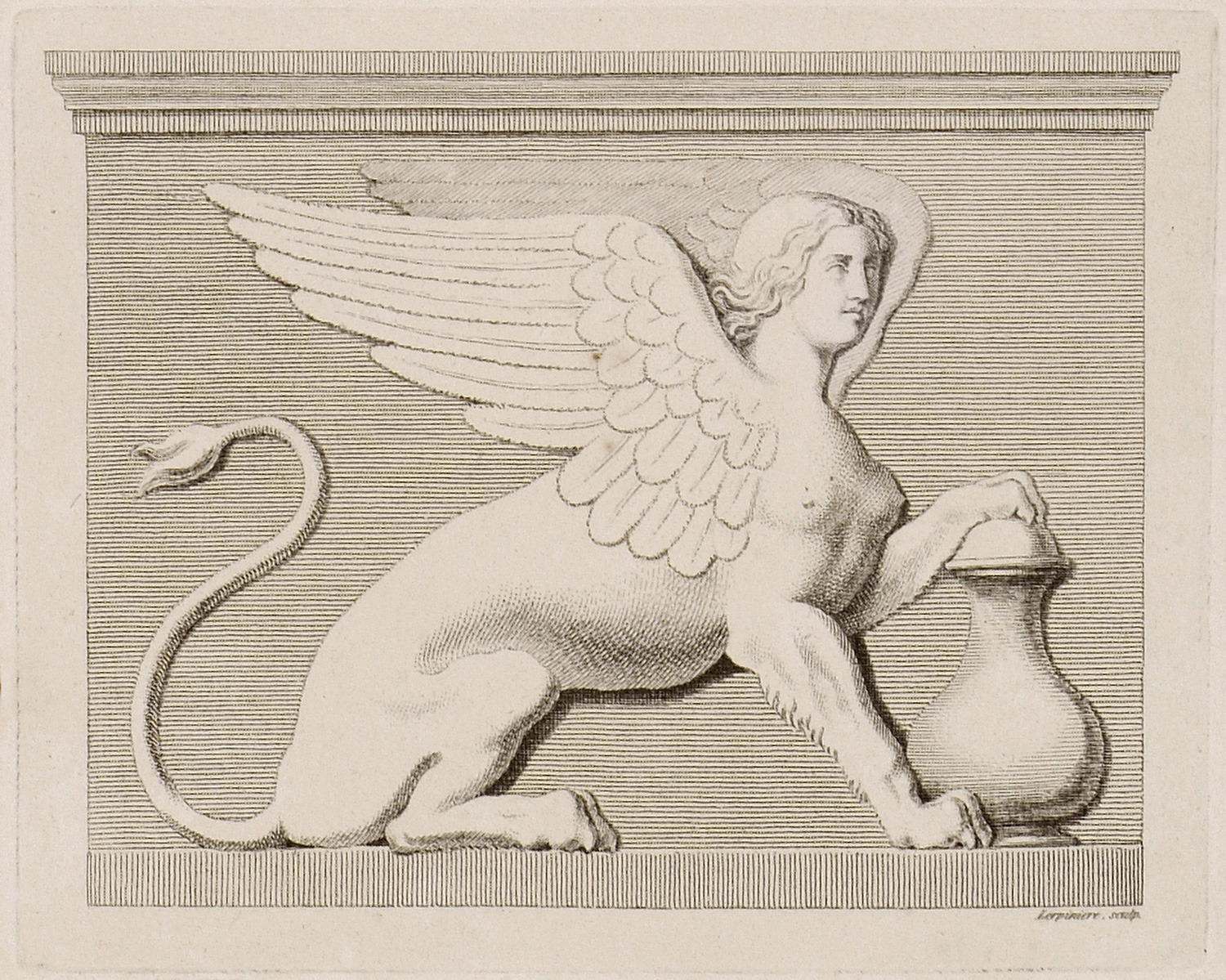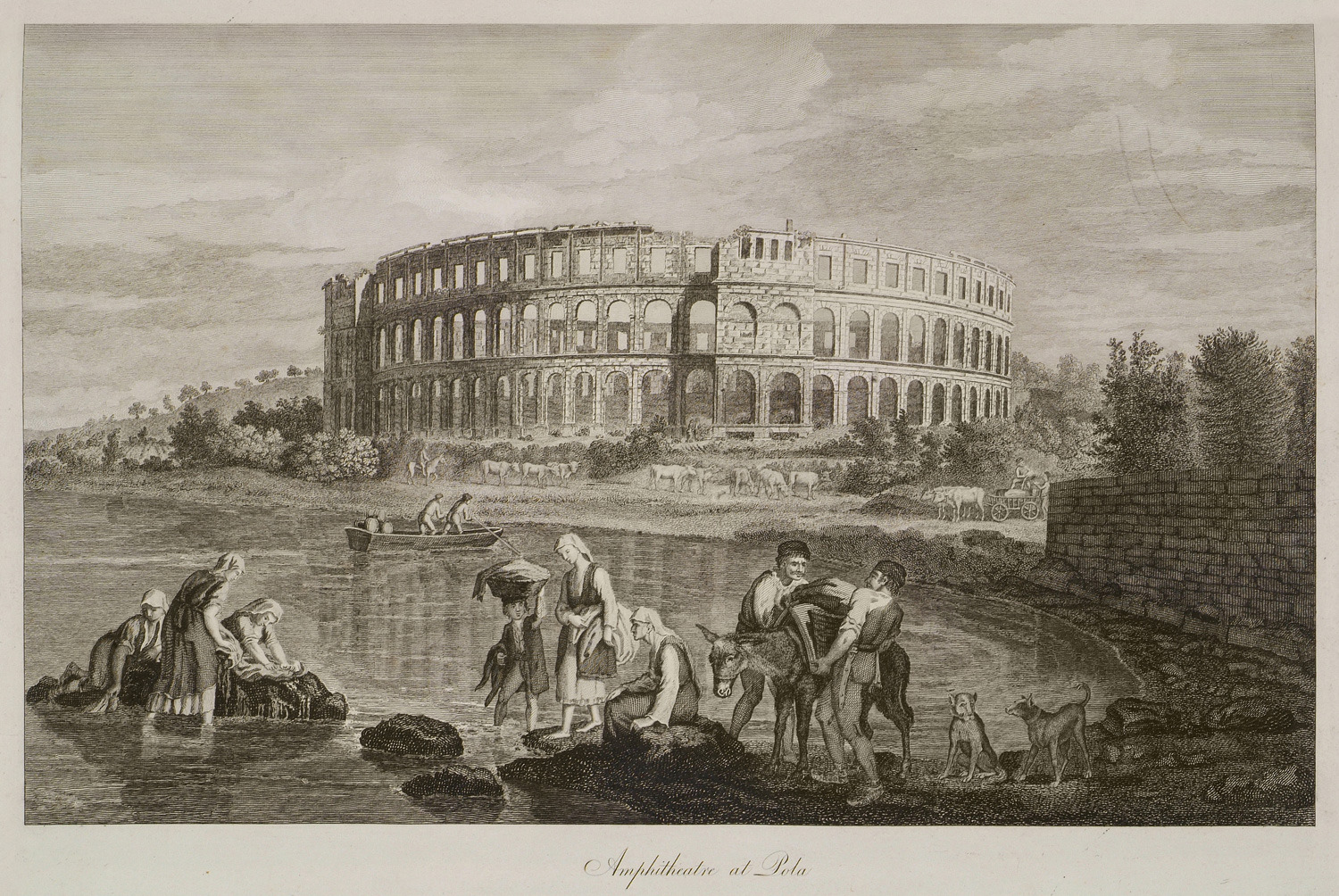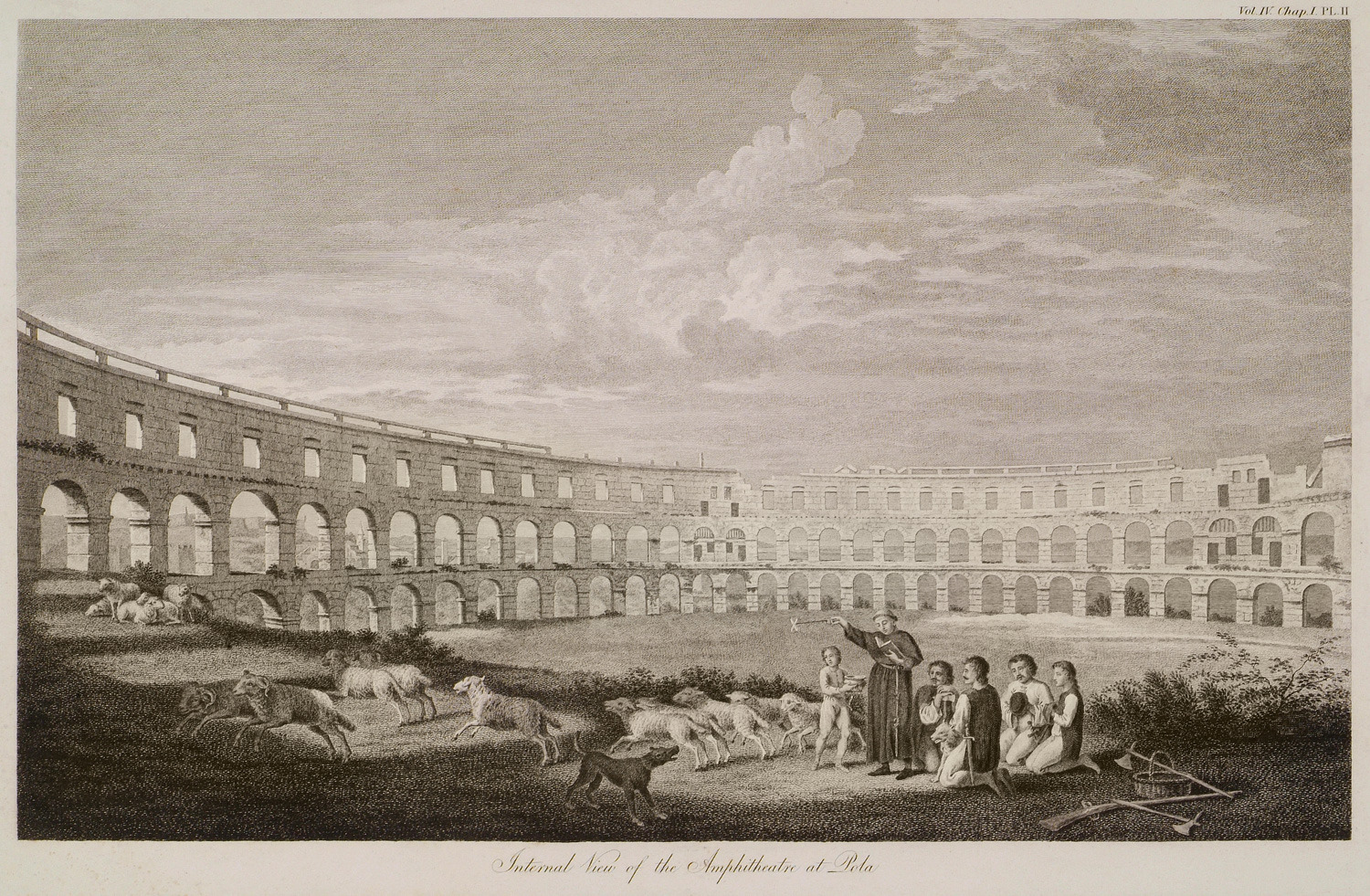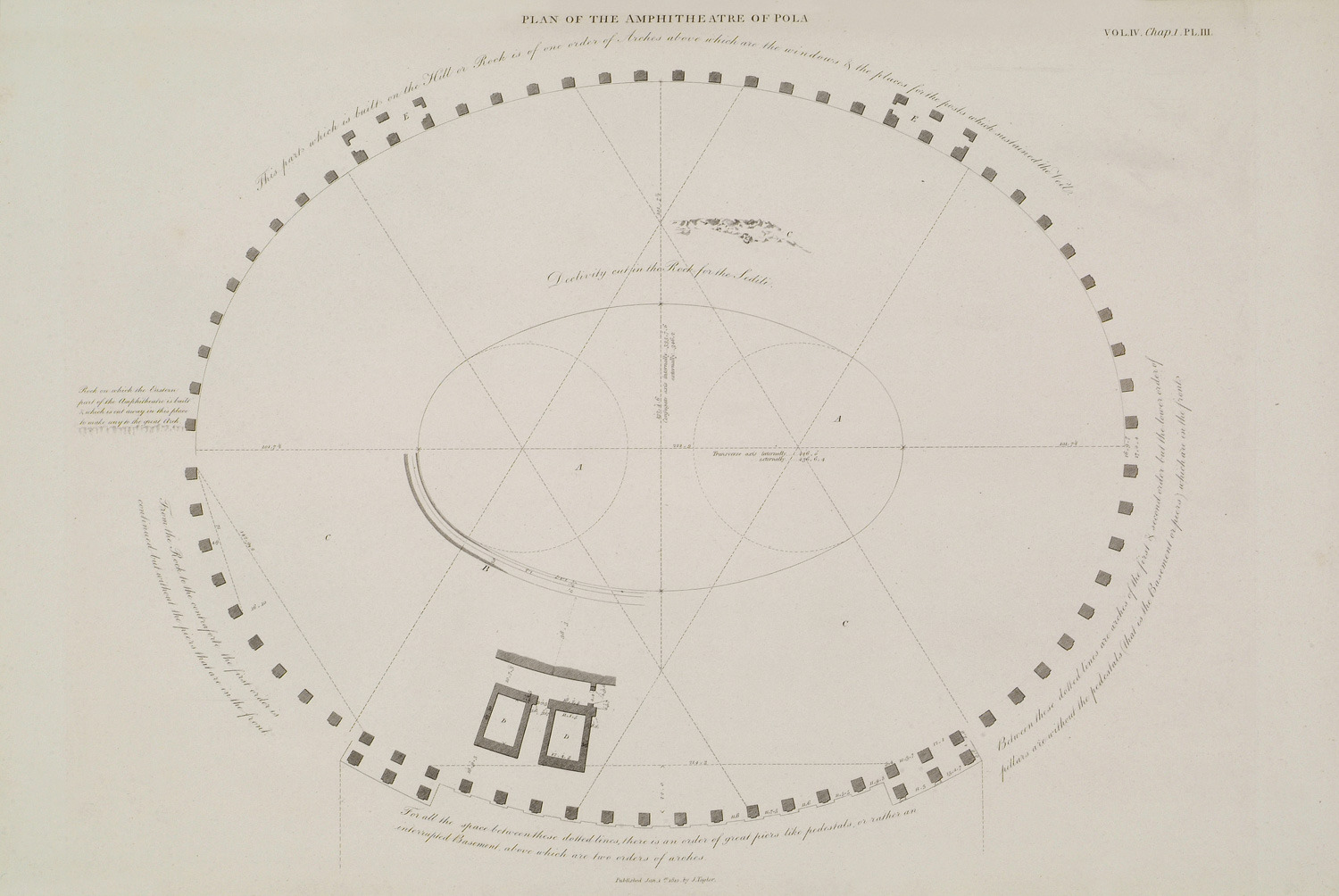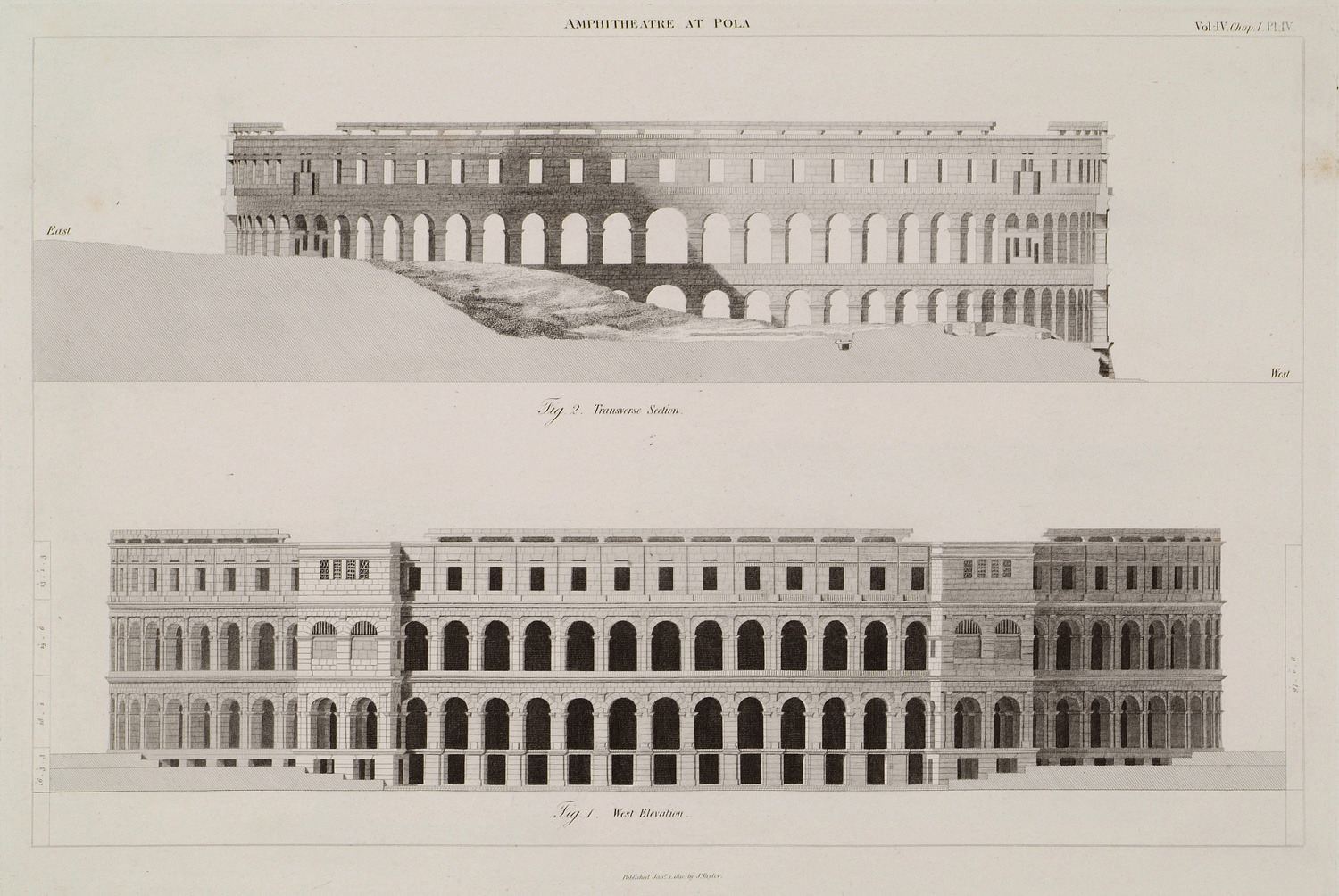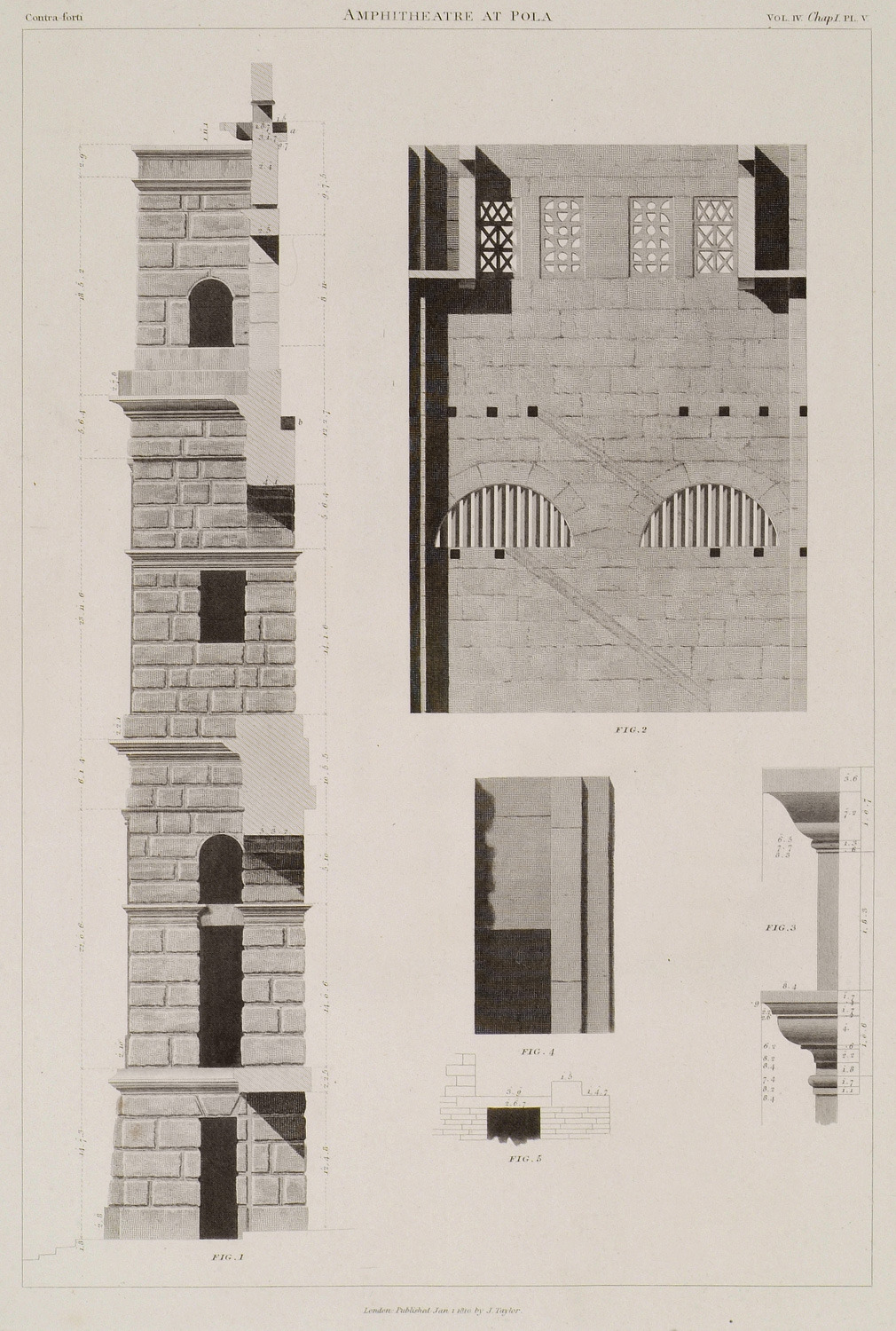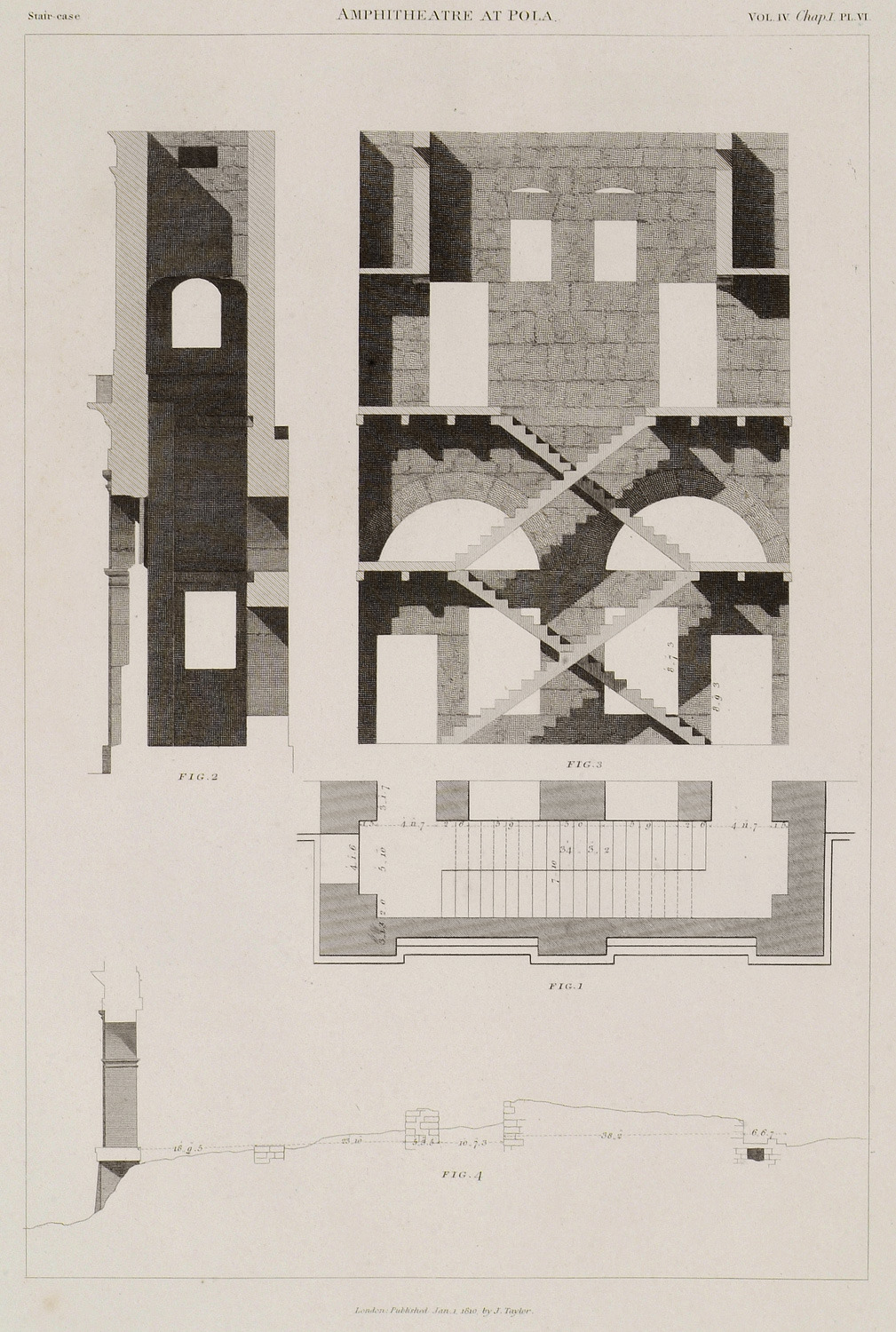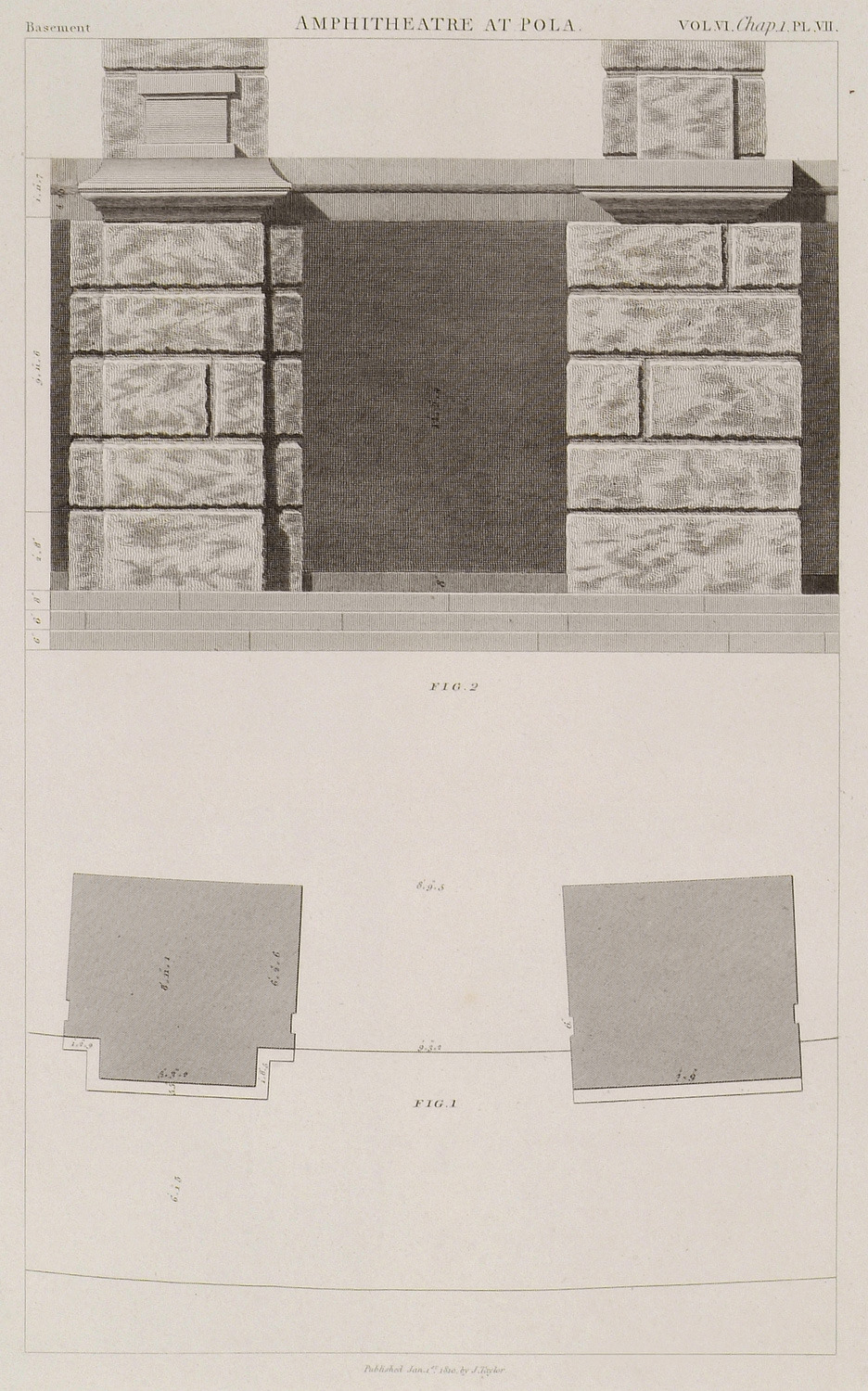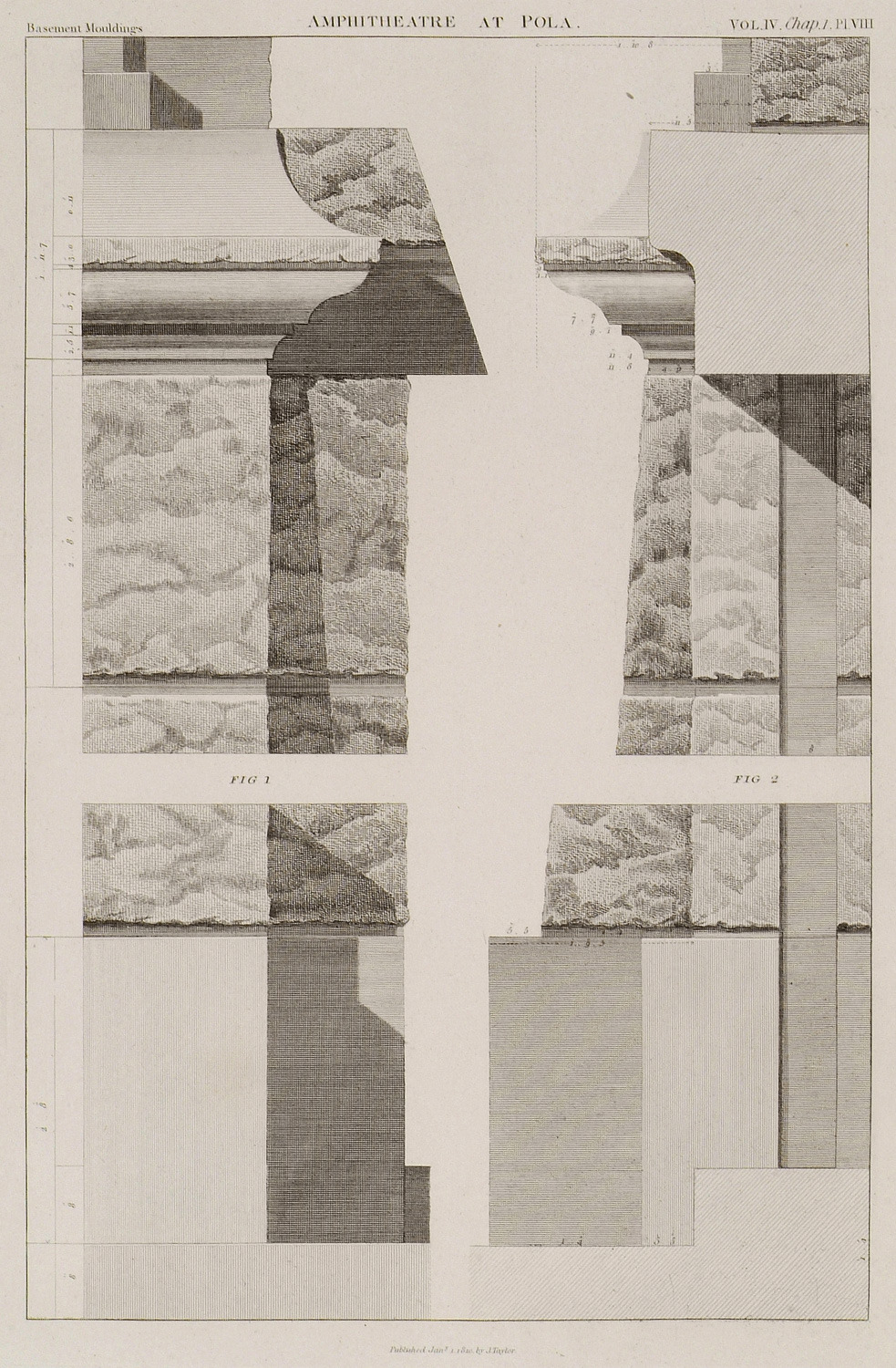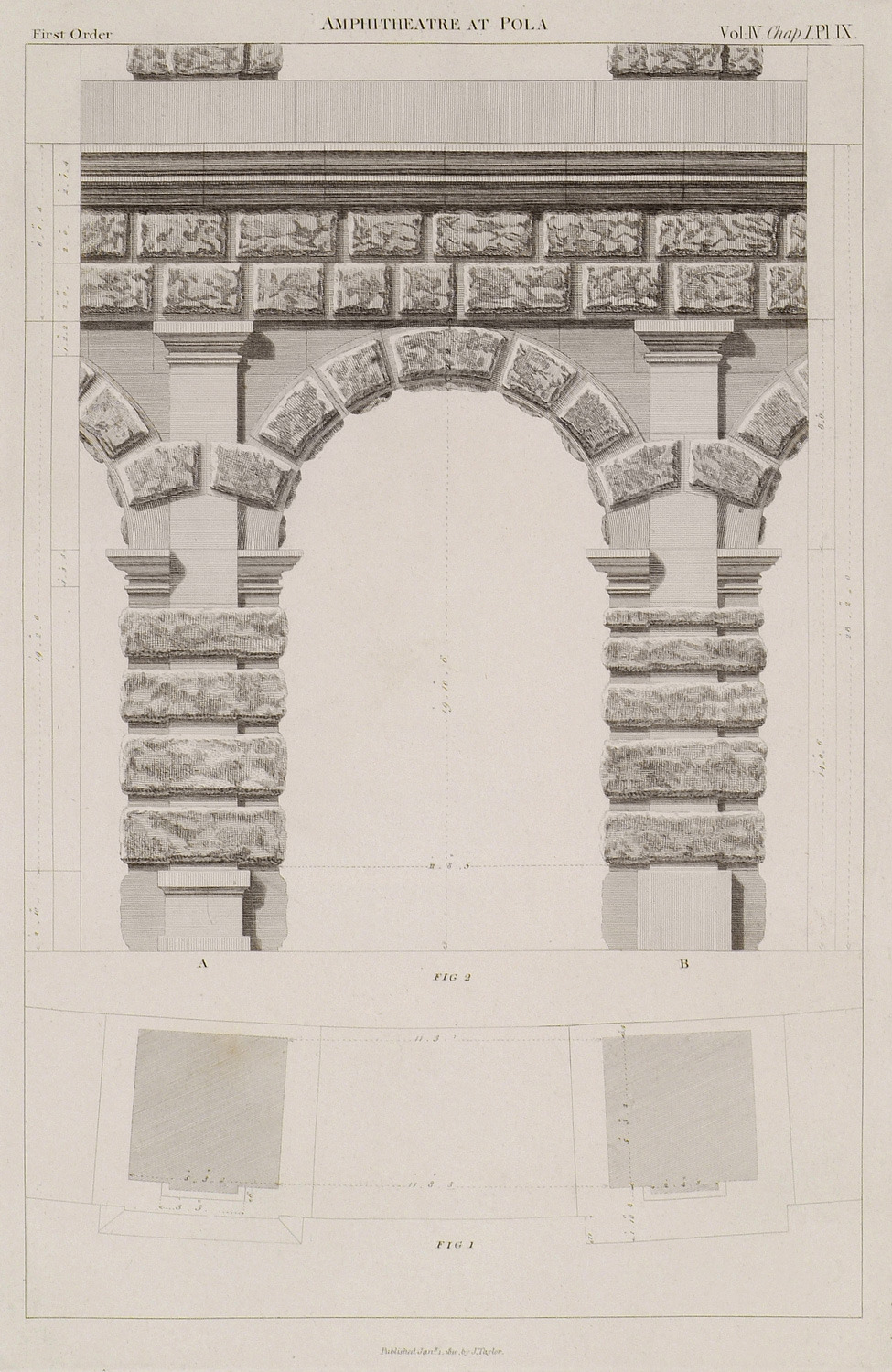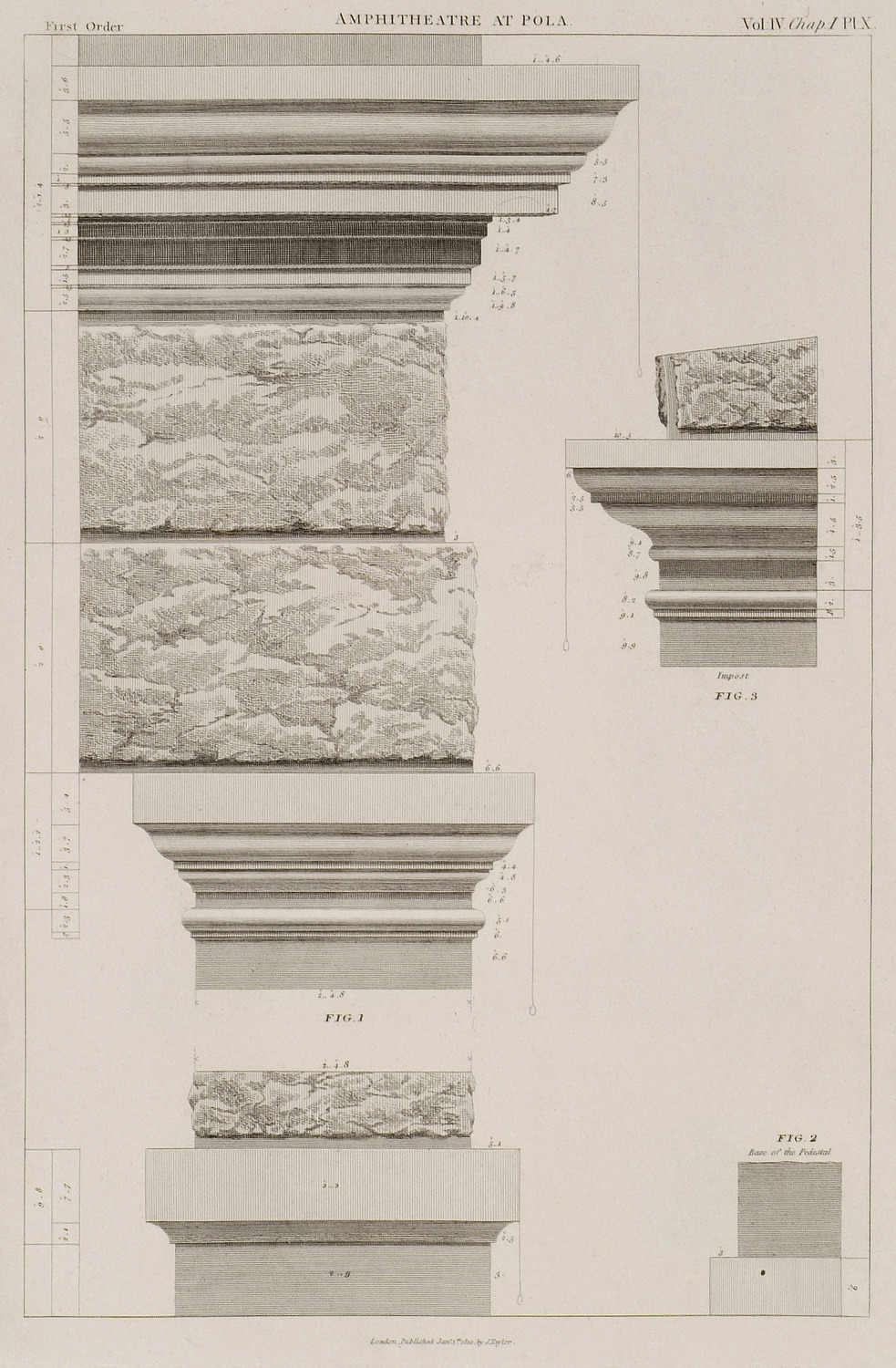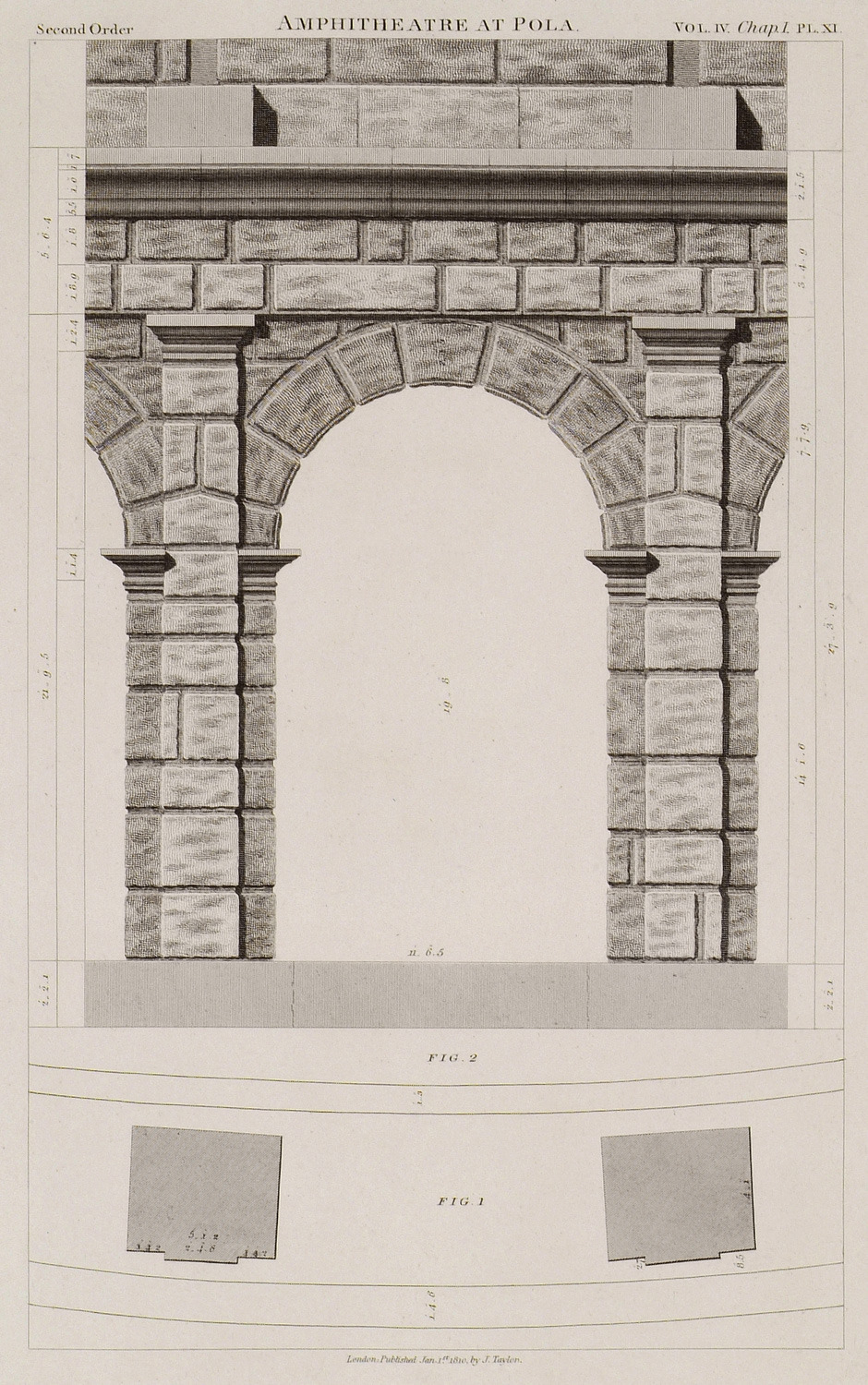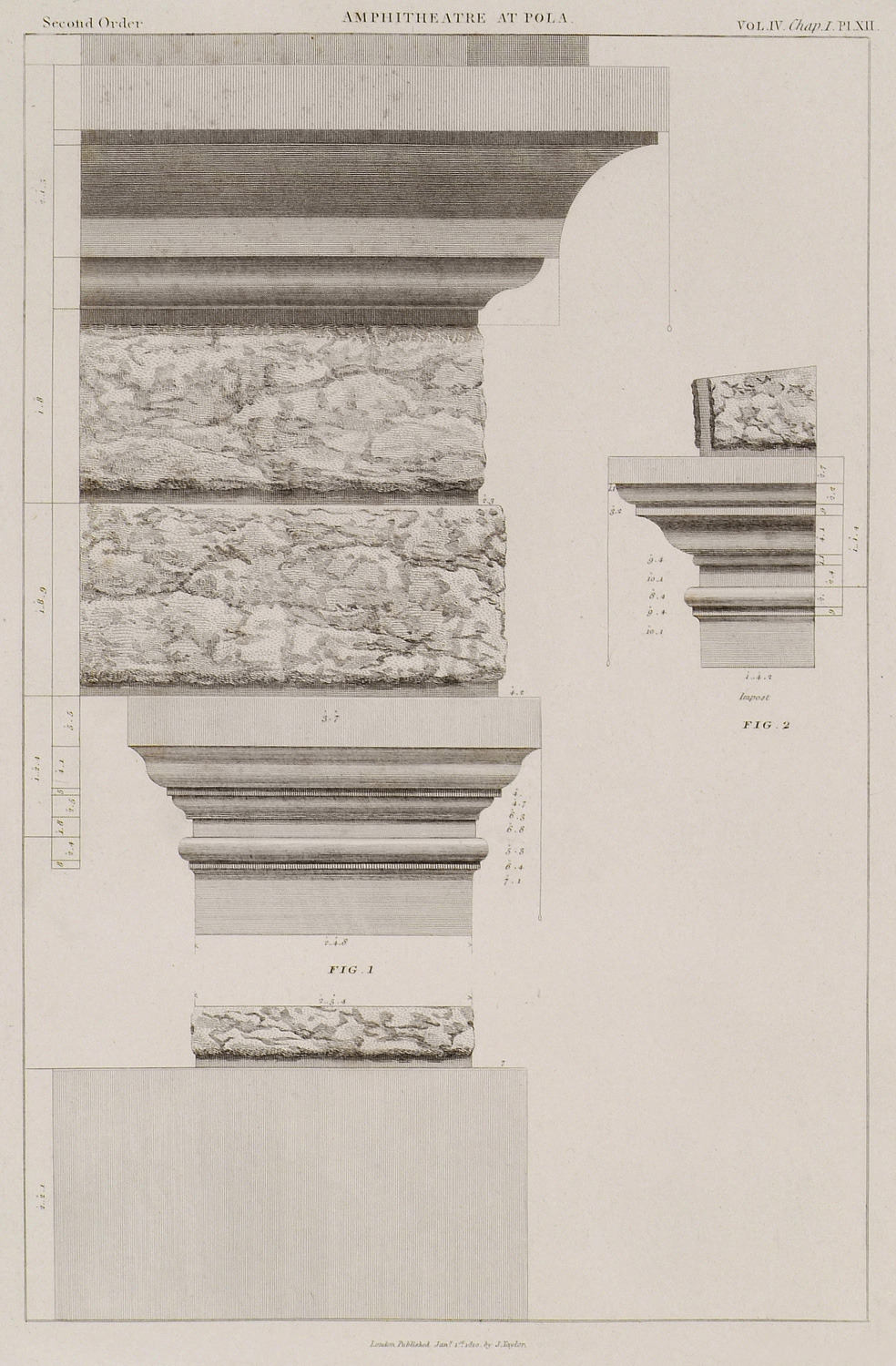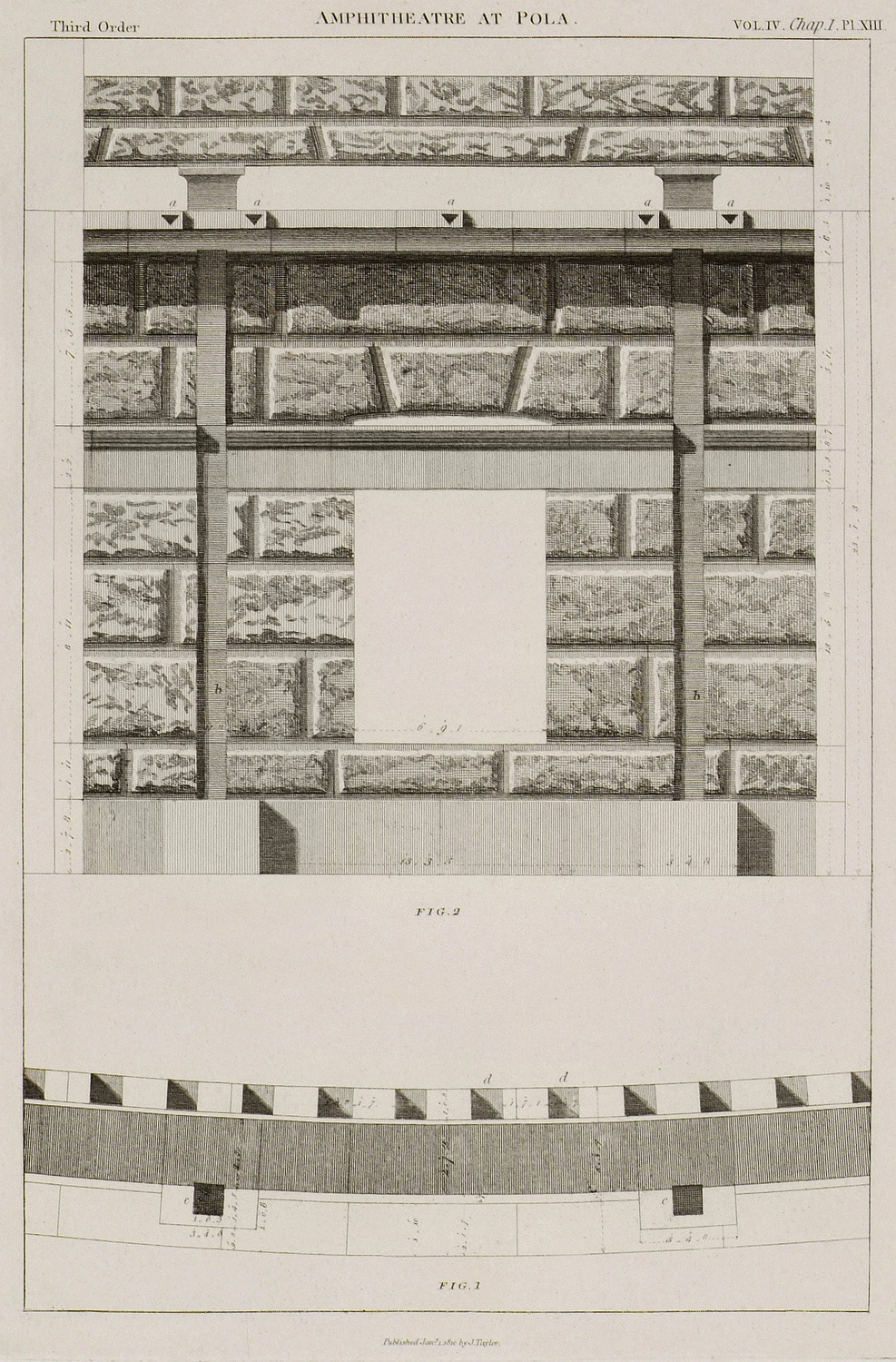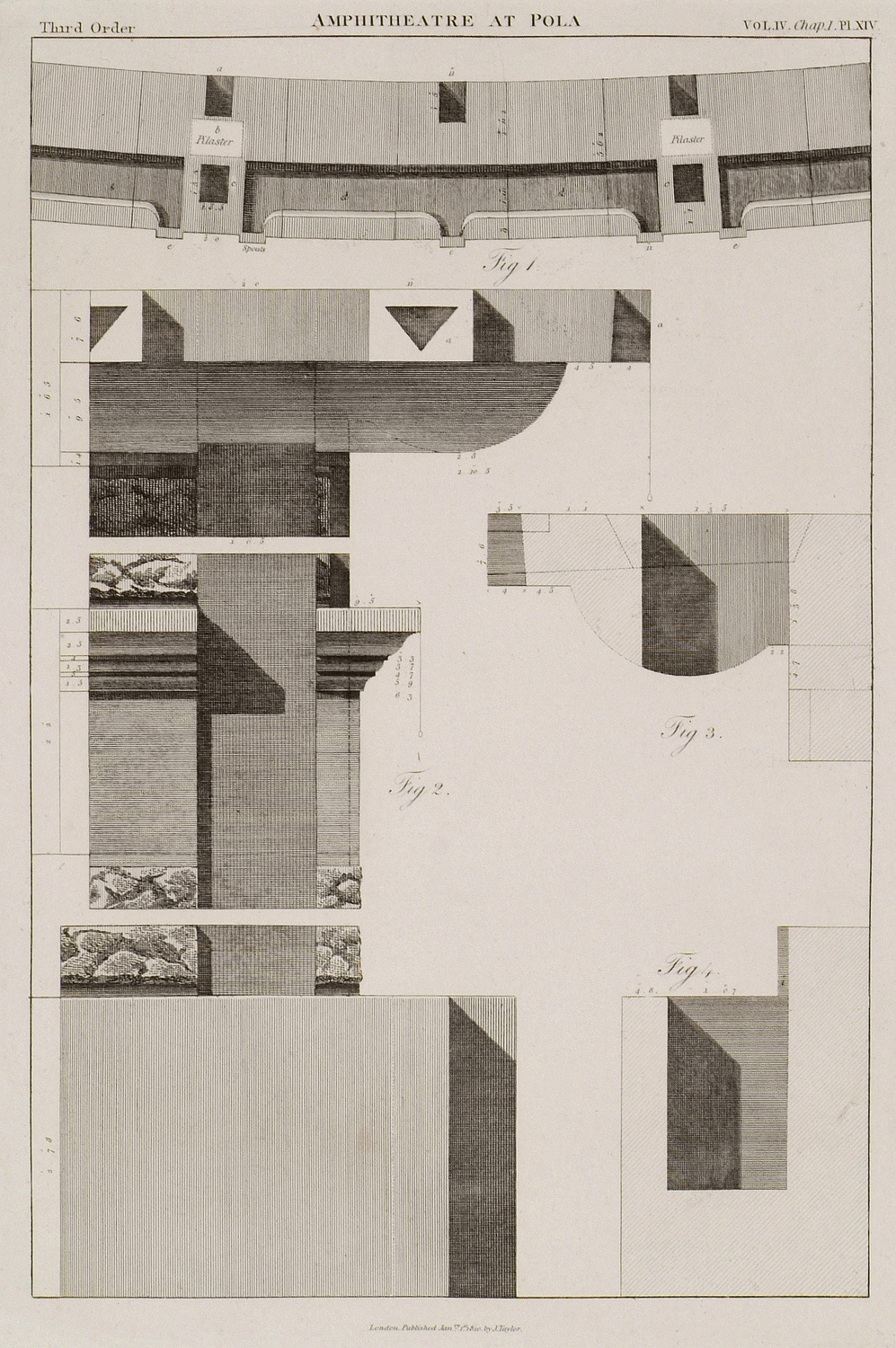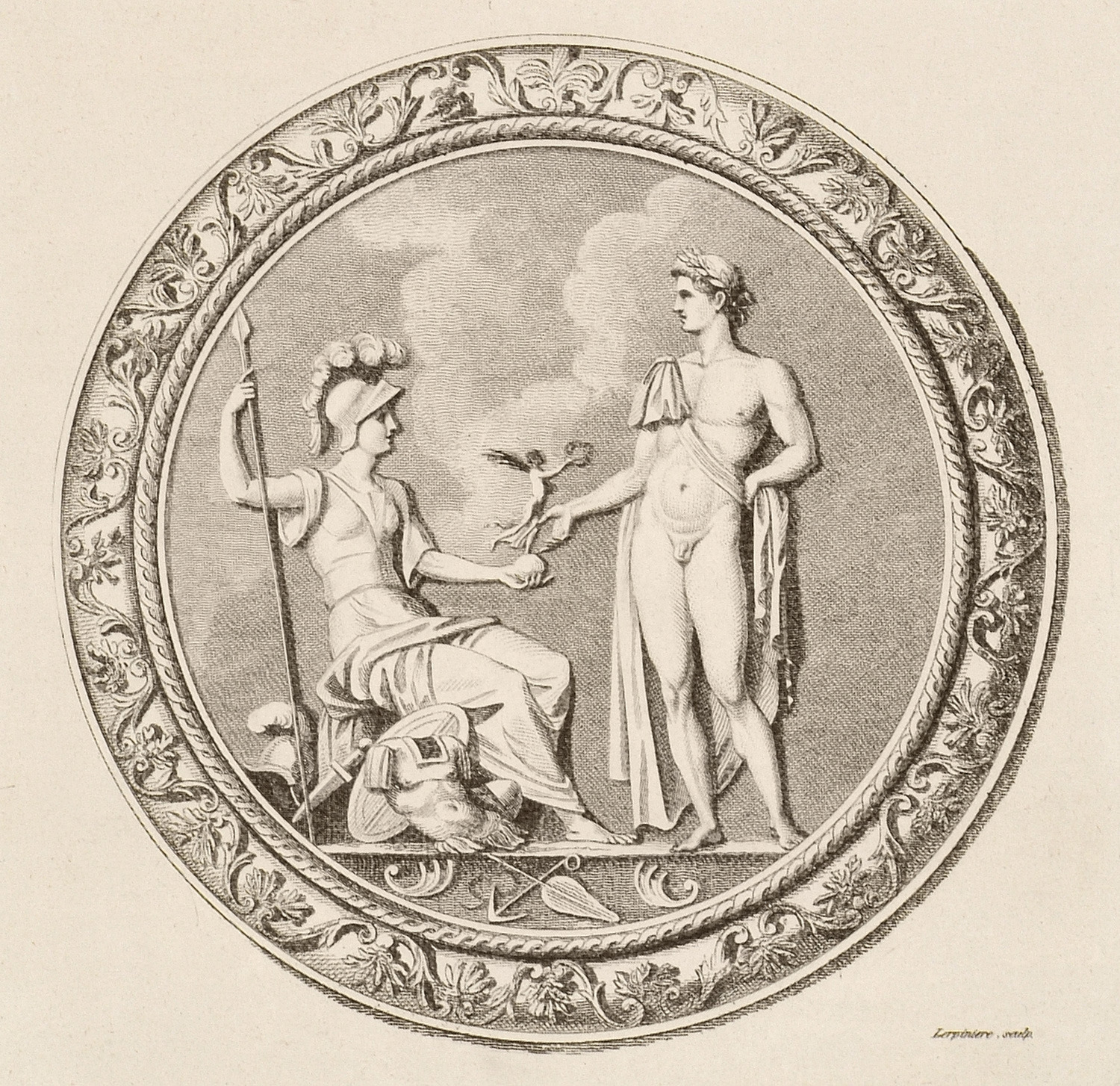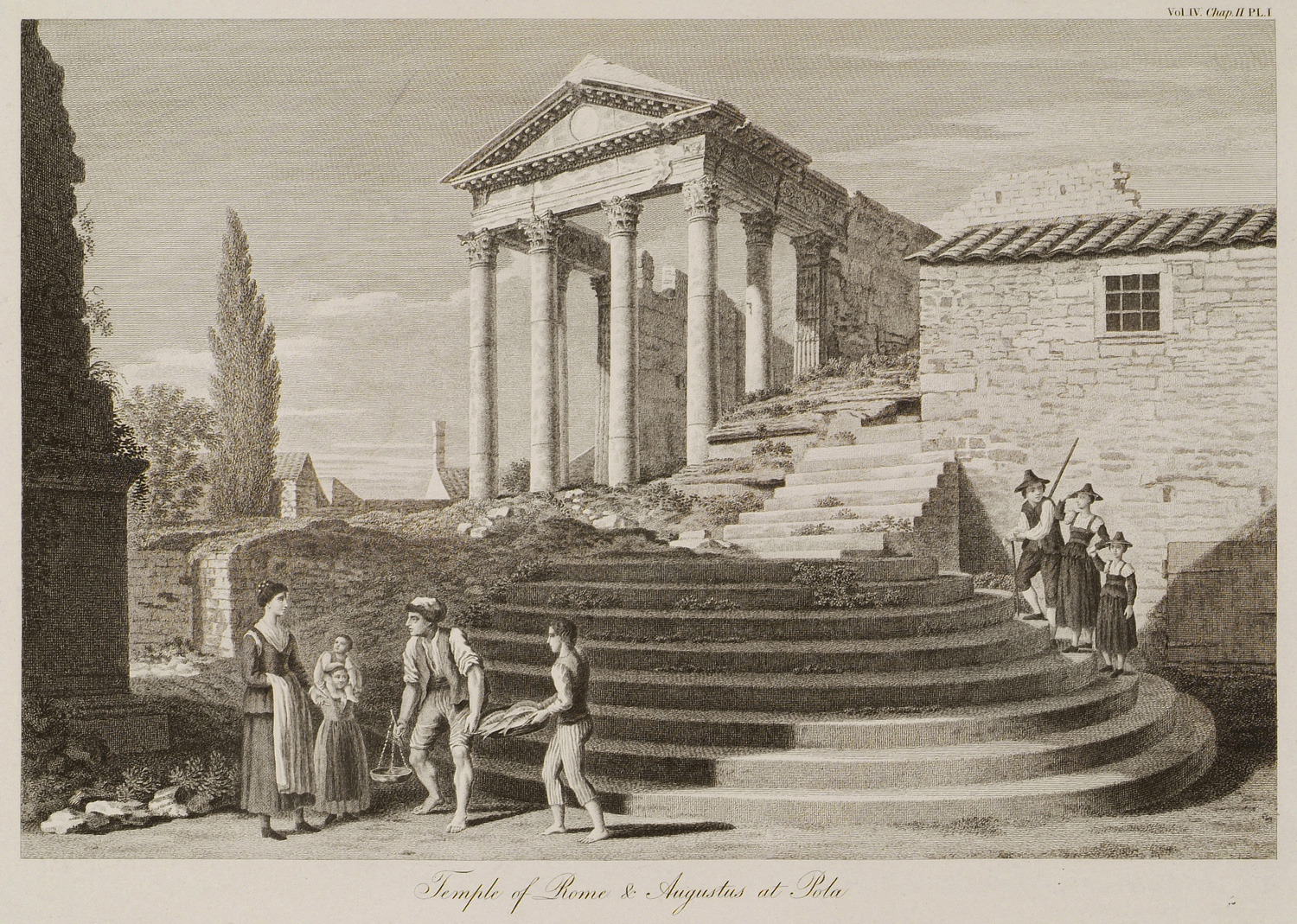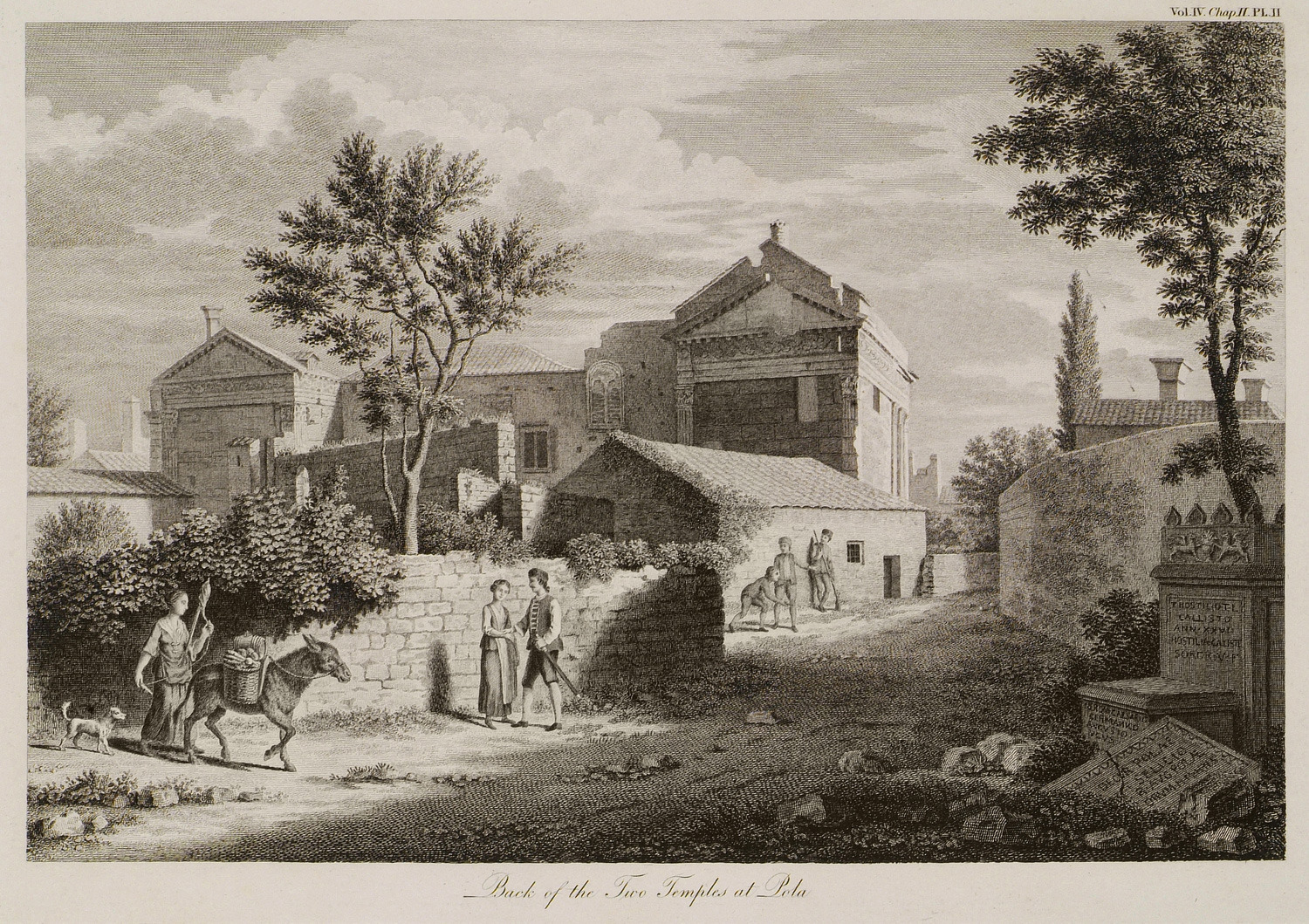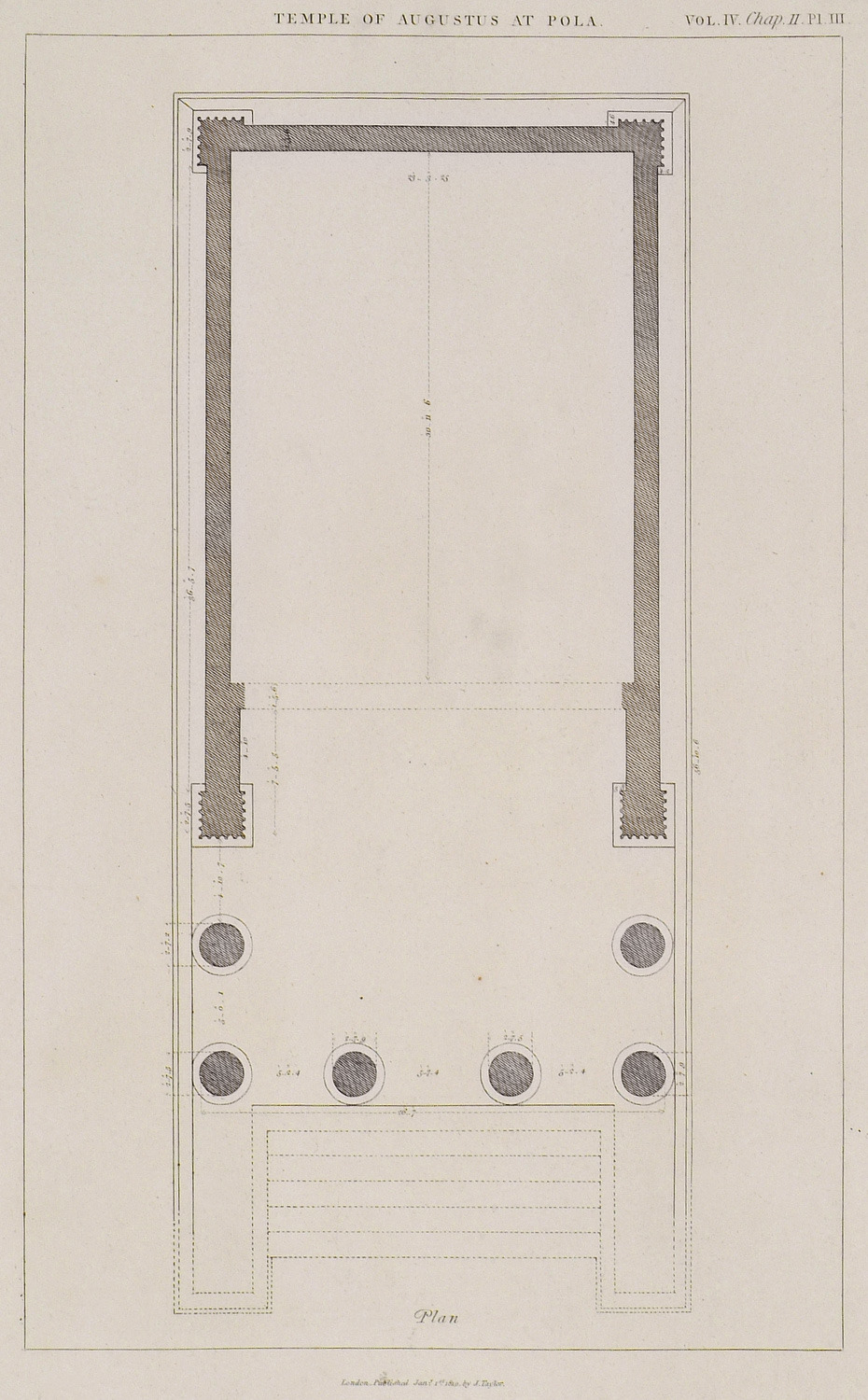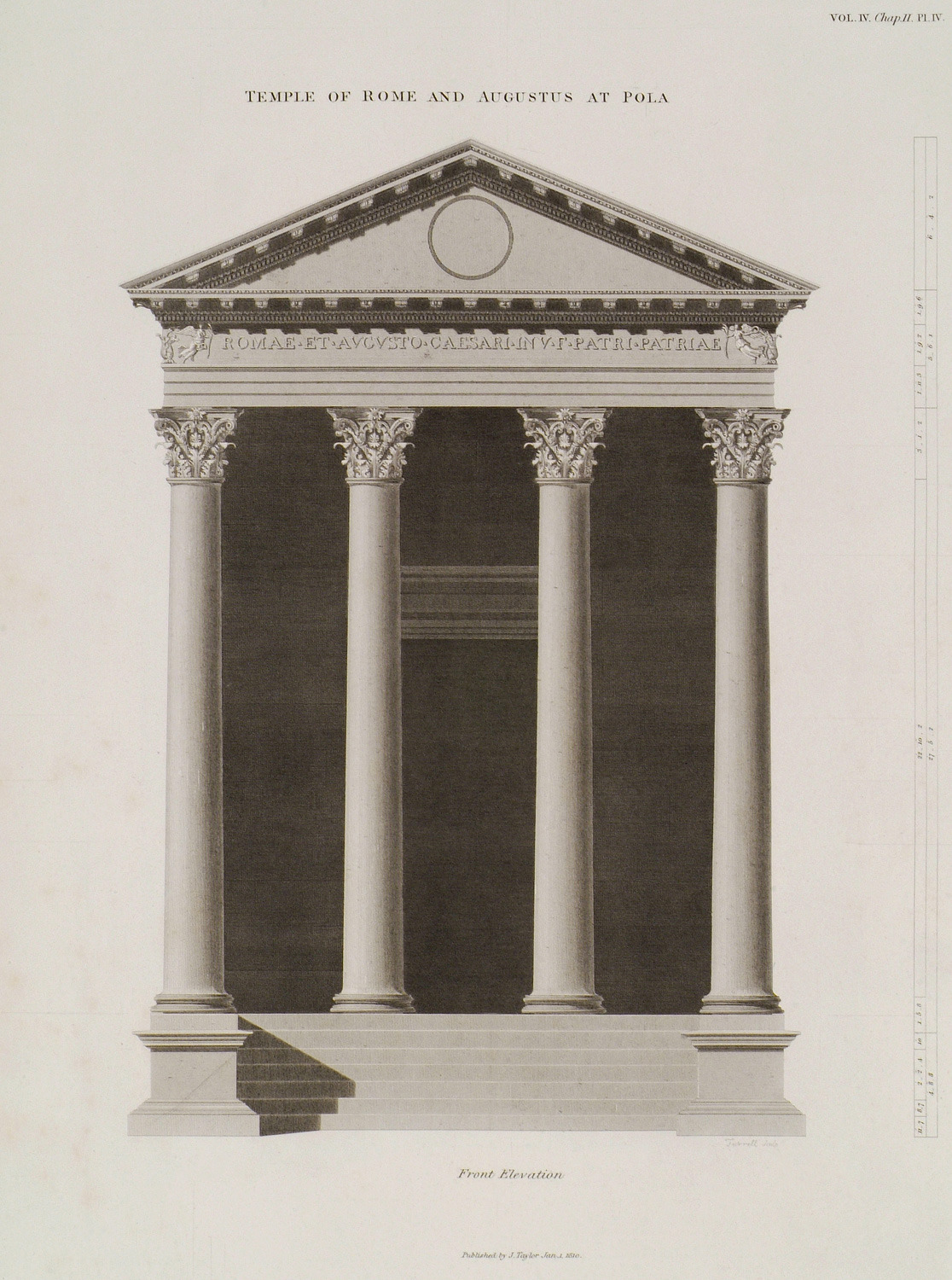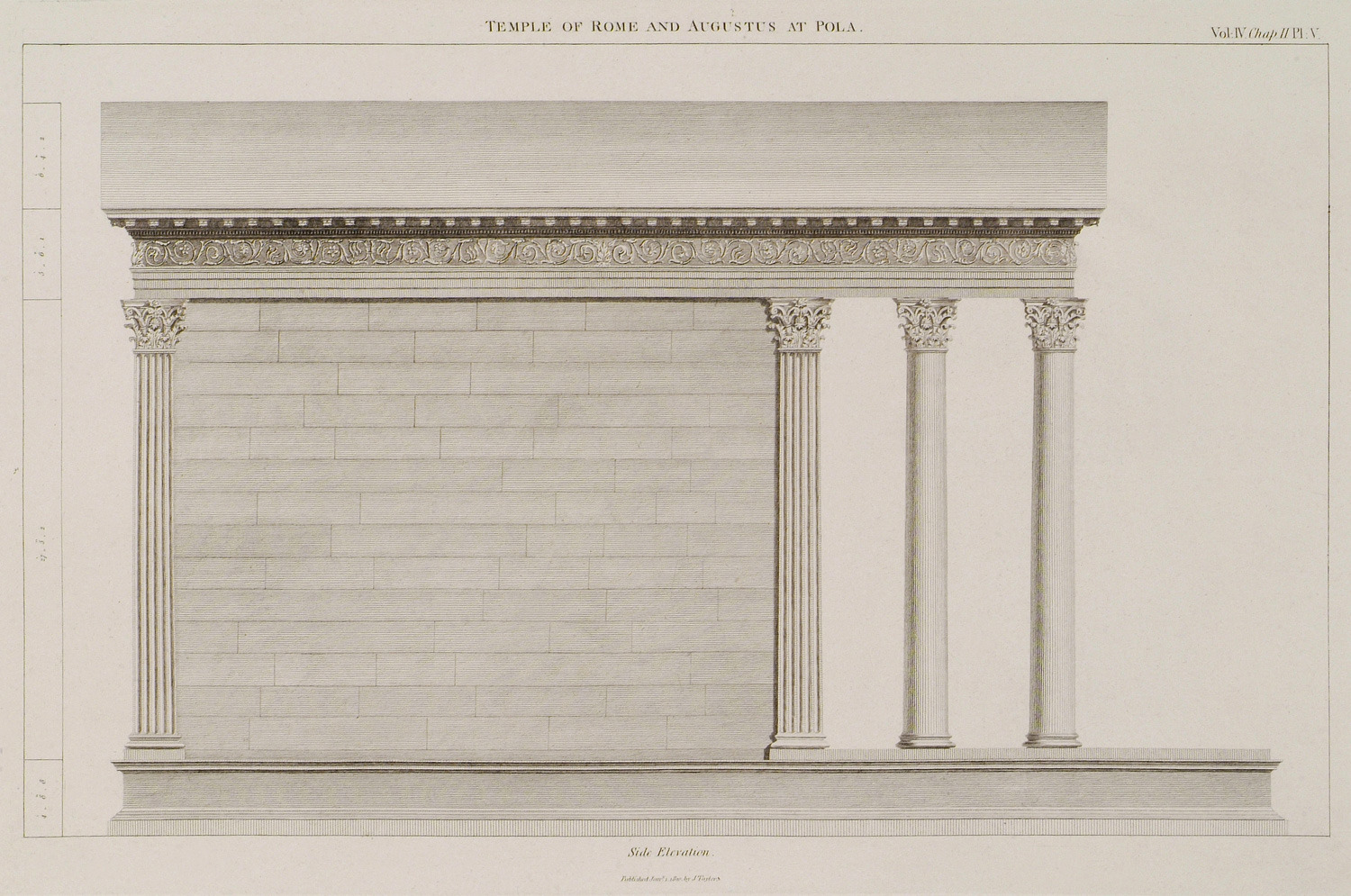Istria (60 Subjects)
Pula in Croatia.
Arch of the Sergii in Pula, Croatia.
Map of Istria.
Map of Istria.
Ancient coin from Istria and inscription from Pula, Croatia.
Relief from Pula.
View of Pula. On the left the Roman Amphitheater.
Relief from a residence at Pula, Croatia.
Relief from residence at Pula, Croatia.
The Roman Amphitheatre of Pula from the west. Slovenian women are laundering their clothes in the sea. Inhabitants of the city come to take water or to water their animals at a gountain close to the amphitheatre.
Interior view of the Roman amphitheatre of Pula. Due to an epidemics among the livestock of the region, the consumption of lamb and mutton has been forbidden. Shepherds of Slavic ethnicity have sought refuge within the amphitheatre, with their herds. A monk of the order of Saint Anthony, patron of animals according to several traditions, is giving his blessing and sprinkling the sheep with holy water; this terrifies the flock and causes the dogs to bark at the monk. On the right, some weapons, which Slav inhabitants of the area always carry with them, according to the author.
Plan of the Roman Amphitheater of Pula: A plan of the Amphitheatre. A. A. The area; B. The podium C.C. The space occupied by the seats. D.D. The prisons in which the animals were kept. E.E. The stair-cases.
Roman Amphitheater of Pula, Croatia: Fig. 1: The elevation of the west-side looking towards the port. Fig. 2: A section of its shortest diameter.
Roman Amphitheater of Pula, Croatia: Fig. 1: Side elevation of the contraforte, with a section of the wall of the amphitheatre. Fig.2: Longitudinal section of the upper part of the contraforte: marks of the line of steps are still visible.[...] Fig. 3: External mouldings at the summit of the contraforte. Fig. 4: Plan and Fig. 5: Section of the walls immediately surrounding the arena. These walls form what is called the podium in the description of the plan.
Roman Amphitheater of Pula, Croatia: Fig. 1: Plan of one of the contraforti, shewing the arrangement of the stair-cases. Fig. 2: Transverse section of ditto. Fig. 3: Londitudinal section towards the body of the amphitheatre, with the steps restored. Fig. 4: Section through the outer wal of the amphitheatre, the remaining fragments of the prisons, and the podium.
Roman amphitheater of Pula, Croatia: Basement Story. Fig. 1: Plan. Fig. 2: Elevation.
Roman Amphitheater of Pula, Croatia: Mouldings of the Basement Story. Fig. 1: Elevation. Fig. 2: Section.
Roman Amphitheater of Pula, Croatia: First Order. Fig. 1: Plan. Fig. 2: Elevation.
Roman Amphitheater of Pula, Croatia: Mouldings of the First Order. Fig. 1: Base, capital and entablature. (The ornamental pedestal is here introduced) Fig. 2: Base of the pedestal. Fig. 3: Impost moulding of the arch.
Roman Amphitheater of Pula, Croatia: Second Order. Fig. 1: Plan. Fig. 2: Elevation.
Roman Amphitheater of Pula, Croatia: Mouldings of the Second Order. Fig. 1: Plinth, capital and entablature. Fig. 2: Impost moulding.
Roman Amphitheater of Pula, Croatia: Third Order. Fig. 1: Plan. Cc are the holes in the plinth to admit the posts of the velum. Fig. 2: Elevation. [...] a.a. are spouts to carry off the water. b.b. grooves to receive the posts of the velum.
Roman Amphitheater of Pula, Croatia: Mouldings of the Third Order. Fig. 1: Plan of the gutters. a. holes apparently to receive timbers [...]b. Pilaster continued to support the two upper courses. c. Openings through the cornice for the uprights of the velum. d. Gutters. e. Spouts with triangular openings to carry off the water. Fig. 2: Mouldings of the order: the cornice is singular: a a rain spouts. Fig. 3: Section of the cornice through the opening for the posts of the velum; the dotted lines shew the gutters. Fig. 4: Section of the plinth with the socket to receive the posts.
Relief from the Temple of Rome and Augustus at Pula, Croatia.
Coin of Augustus.
The facade of the Temple of Augustus and Rome in Pula, Croatia. The building on the right is the city prison. On the stairway of the temple, inhabitants of Dignano d'Istria, today Vodnjan, Croatia. In the foreground, locals of Pula, including a fishmonger and his assistant.
View of the temple of Rome and Augustus and the adjacent temple of Diana in Pula, Croatia. Between the two temples is situated the Communal Palace of Pula and the city prison. Next to the building, a guard and locals who are playing a game of marbles. In the middle ground, a soldier of Slavic ethnicity conversing with a young woman. On the left, a Polish woman with her donkey and small dog.
Plan of the Temple of Rome and Augustus at Pula, Croatia.
Elevation of the Temple of Rome and Augustus at Pula, Croatia.
Elevation of the side of the Temple of Rome and Augustus at Pula, Croatia.


